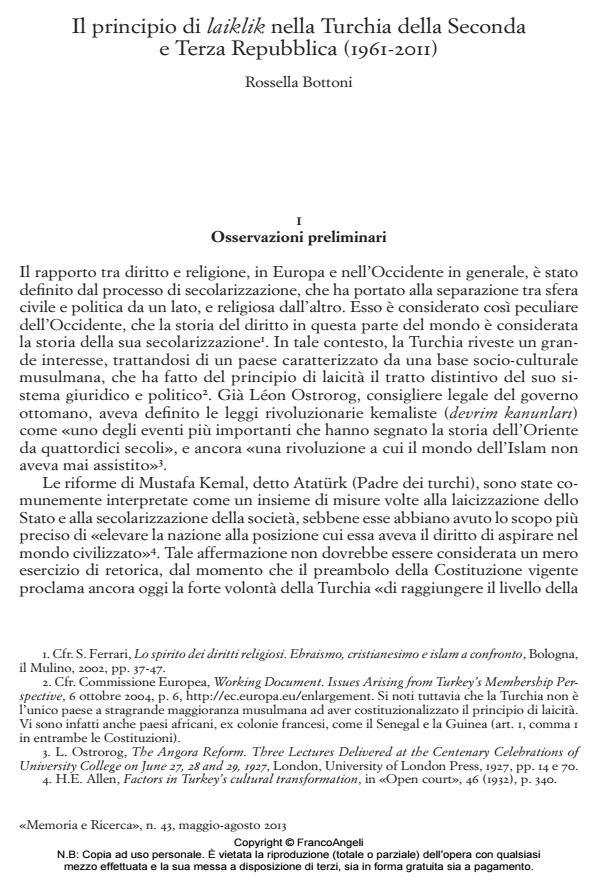The concept of laiklik in Turkey from the Second to the Third Republic (1961-2011)
Journal title MEMORIA E RICERCA
Author/s Rossella Bottoni
Publishing Year 2013 Issue 2013/43
Language Italian Pages 14 P. 95-108 File size 147 KB
DOI 10.3280/MER2013-043007
DOI is like a bar code for intellectual property: to have more infomation
click here
Below, you can see the article first page
If you want to buy this article in PDF format, you can do it, following the instructions to buy download credits

FrancoAngeli is member of Publishers International Linking Association, Inc (PILA), a not-for-profit association which run the CrossRef service enabling links to and from online scholarly content.
This essay aims to examine the peculiarities of the process of secularization and the outcomes of the proclamation and enforcement of the principle of secularism (laiklik) during the Second and Third Republic of Turkey. In this period, the country has experienced a deep transformation of the relationship among religion, politics and society, whose most evident results are a greater visibility of the Islamic headscarf and the success of religiously-oriented political parties. These developments have compromised the ideological pillars on which Atatürk, ‘Father of the Turks’, had founded the ‘new Turkey’ and have led to opposite interpretations. On the one side Turkey, once the bulwark of religious moderation in the Near and Middle East, is seen as being threatened by the rise of Islamic fundamentalism. On the other side, the religiously-oriented protagonists of this social and political change have achieved the country’s most significant progress in the process of adoption of the acquis communautaire and have strengthened its credentials as a democratic regime far more than their Kemalist counterparts.
Keywords: Laicity, Turkey, modernization, Kemalism, Islamic headscarf, Islam-oriented parties
Rossella Bottoni, Il principio di laiklik nella Turchia della Seconda e Terza Repubblica (1961-2011) in "MEMORIA E RICERCA " 43/2013, pp 95-108, DOI: 10.3280/MER2013-043007